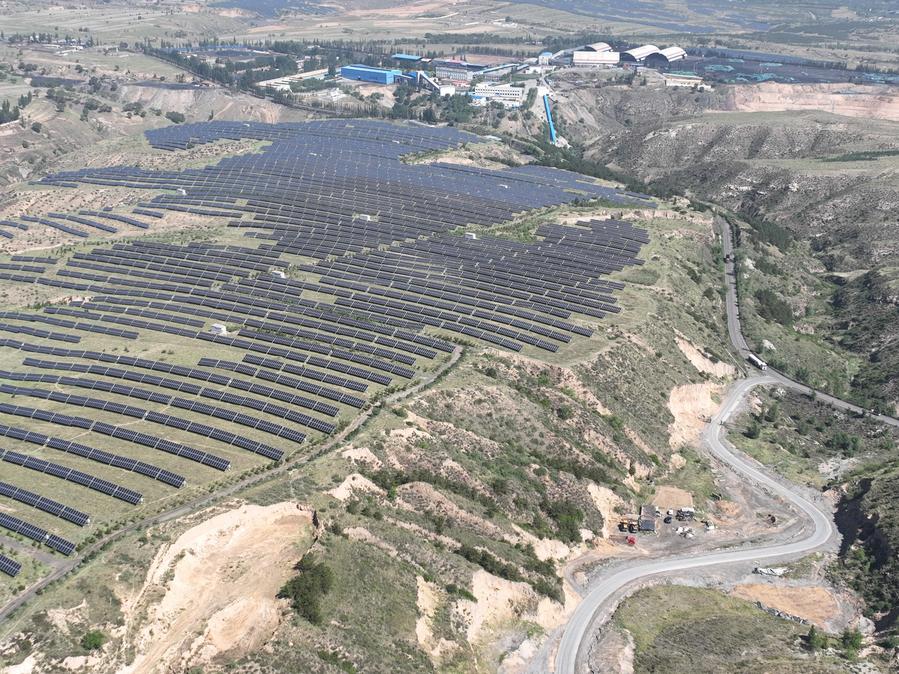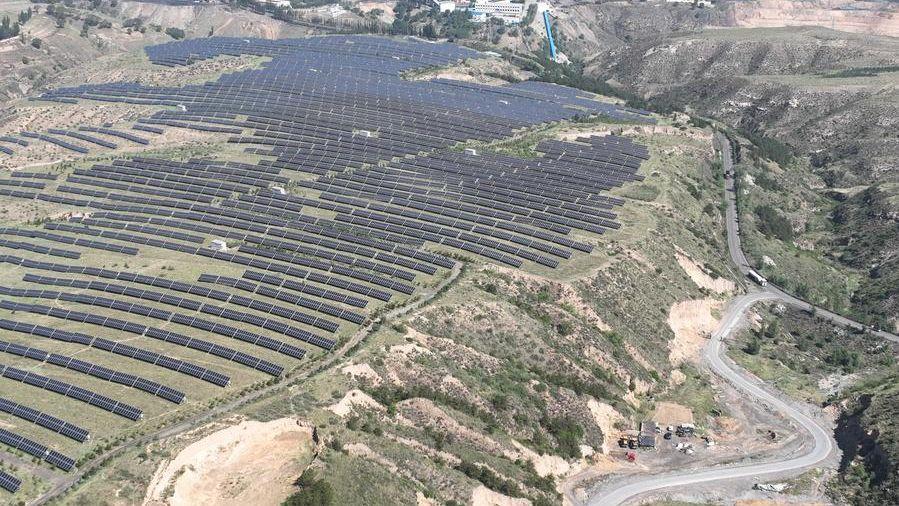An aerial drone photo taken on May 30, 2024 shows the Datong Coal Mining Subsidence Area National Advanced Technology Photovoltaic Demonstration Base in Datong, north China's Shanxi Province. (Xinhua/Liu Tianyu)
TAIYUAN, Sept. 17 (Xinhua) -- In the city of Datong in north China's Shanxi Province, a coal mining subsidence area once scarred by mining activities is now adorned with a vast array of glinting solar panels.
The photovoltaic base covering an area of nearly 50,000 mu (about 3,333 hectares) has generated over 12 billion kilowatt-hours of green energy since 2016.
"This photovoltaic base has epitomized the country's energy transition. Over eight years of operation, it has validated the reliability of photovoltaic products," said Yin Xulong, chairman of Yingli Solar Co., Ltd., a supplier of solar panels.
At the recently held Taiyuan Energy Low Carbon Development Forum in Taiyuan, the capital of Shanxi, Francesco La Camera, director-general of the International Renewable Energy Agency, highlighted China's significant contributions to global renewable energy expansion in a video speech. In 2023, China contributed 63 percent of the world's new renewable energy installed capacity.
As of the end of July this year, the installed capacity of renewable energy reached 1.68 billion kilowatts, making up over 54 percent of the country's total installed power capacity.
In Shanxi, the proportion of installed capacity from new and clean energy rose from 33.9 percent in 2019 to 47.2 percent in the first half of 2024, while the share of electricity generated from these sources increased from 18.1 percent to 28.2 percent during the same period.
Shanxi has a unique advantage in developing green energy sources. For example, coke oven gas, a byproduct of coke production, contains about 60 percent hydrogen, making it a cost-effective source for hydrogen production.
In recent years, steel and coke companies in the province, such as Jinnan Steel Group, Meijin Energy, and Pengfei Group, have raced to enter the hydrogen energy sector.
By the end of last year, Shanxi's capacity for producing high-purity hydrogen from coke oven gas, chemical tail gas, and electrolysis reached 31,000 tonnes per year, and the number of hydrogen fuel cell vehicles in operation had increased to 885.
In July this year, delegations from two coal-producing provinces in Indonesia visited Shanxi. At energy companies such as Meijin Energy, visitors were impressed by China's concrete efforts to transform its traditional energy sector.
Putra Adhiguna, managing director of Energy Shift Institute, said that Shanxi's existing industries are being well-used as a stepping stone for a green transformation, and China sees this shift not only as a challenge but also as a significant opportunity.
At the recently held China (Taiyuan) International Energy Industry Expo, innovative displays, including intelligent mining technologies and space capsule-inspired ground control platforms, captivated attendees.
In March this year, an intelligent platform was launched to store vast amounts of data from over 400 coal mines in Shanxi. It utilizes large model training to help enterprises lower the barriers to technological development and accelerate the innovation of intelligent products.
Due to the rapid development of intelligent mining technology, the province's energy consumption per unit of GDP has decreased cumulatively by 10.9 percent since 2021.
"China's cumulative installed capacity of renewable energy now accounts for about 40 percent of the global total, and China's exports of wind and solar products have contributed to a reduction of 810 million tonnes in carbon emissions for other countries," said Lu Junling, chief economist at the National Energy Administration.
Lu added that international cooperation should be strengthened in the energy fields such as wind, solar, hydrogen, storage, and smart energy technologies. Support for developing countries' green and low-carbon energy development should be intensified, and new opportunities for diversified energy partnerships should be actively explored.





 A single purchase
A single purchase









